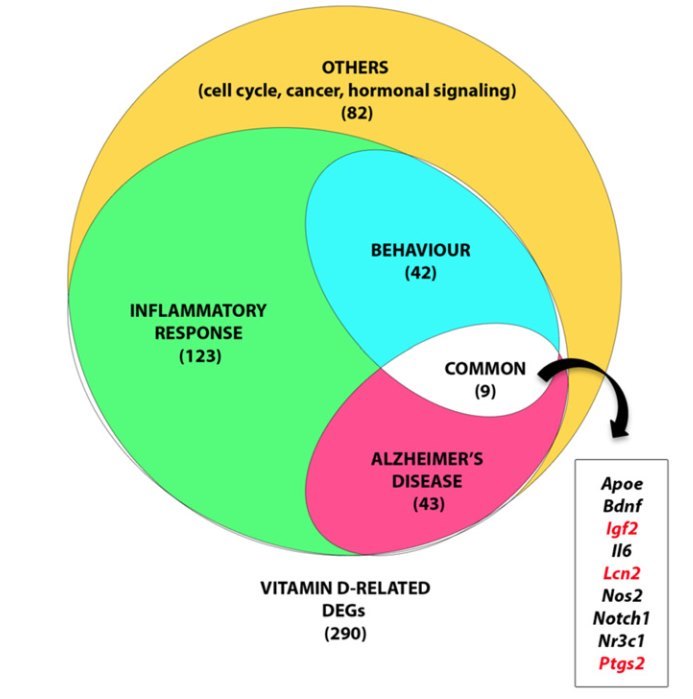Vitamin D influences inflammation and Alzheimer’s genes (in mice)
Vitamin D interacts with Esr1 and Igf1 to regulate molecular pathways relevant to Alzheimer’s disease
Molecular Neurodegeneration Vol 11, Article number: 22 (2016) https://doi.org/10.1186/s13024-016-0087-2
Véréna Landel, Pascal Millet, Kévin Baranger, Béatrice Loriod & François Féron
📄 Download the PDF from VitaminDWiki

Background
Increasing evidence suggests a potential therapeutic benefit of vitamin D supplementation against Alzheimer’s disease (AD). Although studies have shown improvements in cognitive performance and decreases in markers of the pathology after chronic treatment, the mechanisms by which vitamin D acts on brain cells are multiple and remain to be thoroughly studied. We analyzed the molecular changes observed after 5 months of vitamin D3 supplementation in the brains of transgenic 5xFAD (Tg) mice, a recognized mouse model of AD, and their wild type (Wt) littermates. We first performed a kinematic behavioural examination at 4, 6 and 8 months of age (M4, M6 and M8) followed by a histologic assessment of AD markers. We then performed a comparative transcriptomic analysis of mRNA regulation in the neocortex and hippocampus of 9 months old (M9) female mice.
Results
Transcriptomic analysis of the hippocampus and neocortex of both Wt and Tg mice at M9, following 5 months of vitamin D3 treatment, reveals a large panel of dysregulated pathways related to i) immune and inflammatory response, ii) neurotransmitter activity, iii) endothelial and vascular processes and iv) hormonal alterations. The differentially expressed genes are not all direct targets of the vitamin D-VDR pathway and it appears that vitamin D action engages in the crosstalk with estrogen and insulin signaling. The misexpression of the large number of genes observed in this study translates into improved learning and memory performance and a decrease in amyloid plaques and astrogliosis in Tg animals.
Conclusions
This study underlies the multiplicity of action of this potent neurosteroid in an aging and AD-like brain. The classical and non-classical actions of vitamin D3 can act in an additive and possibly synergistic manner to induce neuroprotective activities in a context-specific way.
